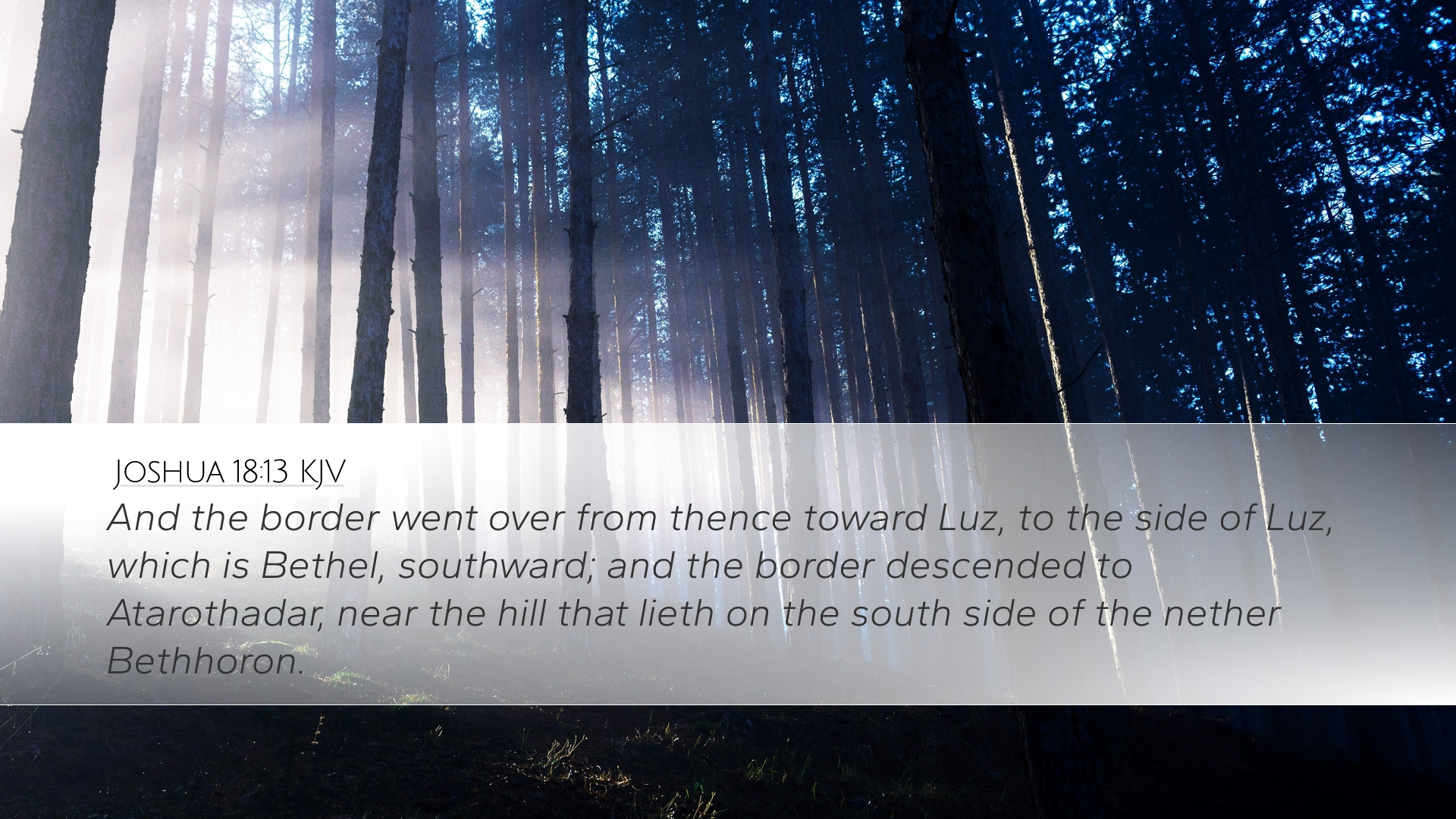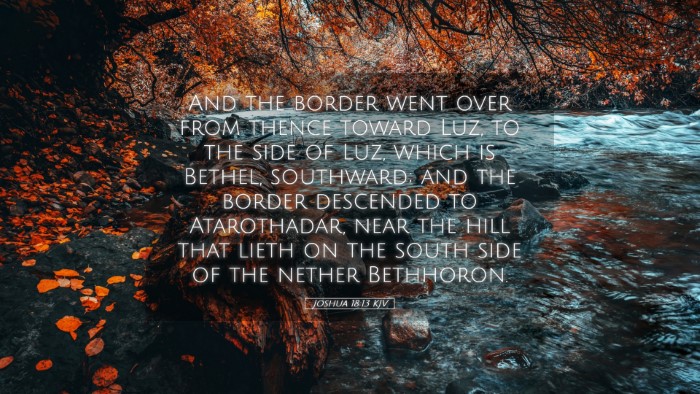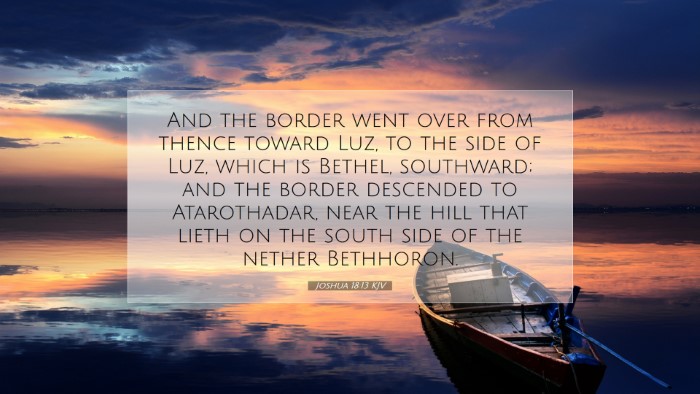Commentary on Joshua 18:13
Text of the Verse: "And the border went over from thence toward Luz, to the side of Luz, which is Bethel, southward; and the border descended to Atarothadar, near the hill that lies on the south side of the nether Bethhoron."
Introduction
The passage of Joshua 18:13 is embedded within a context of land allocation among the tribes of Israel following their conquest of Canaan. This verse is significant as it provides geographical and territorial details that are crucial for understanding the division of land as well as the fulfillment of God's promises to Israel. The commentaries from Matthew Henry, Albert Barnes, and Adam Clarke lend profound insights into the historical, theological, and practical applications of this text.
Geographical Significance
This verse describes a segment of the border that delineated the territory of Ephraim and offers insights into the topography of the region. As noted by Matthew Henry, the mention of "Luz" and its association with "Bethel" highlights not only geographical locations but also the historical significance of these places as sites of worship and divine encounters (Genesis 28:19). The connection of these two locations signifies a transition in Israel's history from a nomadic people to a settled nation.
Interpretation of Key Locations
- Luz: Known historically as a place marked by significant events, Luz’s mention here roots the allocation of land in a landscape of divine activity and fulfillment of promises.
- Bethel: Meaning "House of God," Bethel’s historical importance as a sacred site indicates a focus on the divine presence in the land divisions.
- Atarothadar: As it is described as being near the hill on the south side of the nether Bethhoron, its mention is pivotal for understanding the topography that impacts settlement and defense strategies.
Theological Implications
This verse intricately weaves together themes of God's faithfulness and the physical inheritance of His people. Albert Barnes emphasizes the importance of land as not merely a possession but a part of the covenant relationship between God and Israel. The ongoing reference to geographical boundaries serves to remind readers that God not only made promises but also provided tangible means through which those promises were fulfilled.
Covenant and Promise
The delineation of borders can be seen as a concrete fulfillment of God's covenant with Abraham, Isaac, and Jacob regarding their descendants' inheritance (Genesis 15:18-21). This notion further underlines the idea of continuity in the biblical narrative, suggesting that the physical manifestations of God's promises are as vital as the spiritual implications.
Application for the Believer
For pastors and theologians, the application of Joshua 18:13 extends beyond mere geographical logistics. Adam Clarke speaks to the enduring relevance of Israel’s land distribution to contemporary faith practices. He suggests that understanding one’s “land” or spiritual inheritance is integral to the believer's journey.
Lessons on Faith and Land
- Identity: Just as the Israelites received their portion, believers today can reflect on their identity in Christ and the spiritual inheritance they possess (Ephesians 1:11).
- Belonging: The allocation of land signifies belonging—the Israelites were not just wanderers; they were settlers in the promise of God, which parallels the Christian’s rooting in Christ's love.
- Responsibility: With the blessing of land comes the responsibility of stewardship. This calls believers to actively cultivate their spiritual inheritance and to share it with others through service and witness.
Conclusion
The borders described in Joshua 18:13 may initially seem mundane, yet they resonate with deep theological importance and practical implications for believers today. By examining this verse through the insights offered by Henry, Barnes, and Clarke, we are reminded that the land is not just a physical space but a symbolic representation of God’s promises, identity, and calling for His people. Pastors and theologians are encouraged to draw from this text as a foundation for teaching, preaching, and personal reflection, emphasizing the enduring truth that God's promises remain steadfast amidst changing landscapes.


